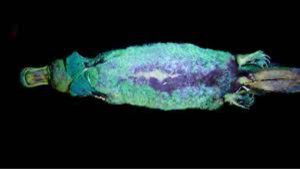Lichens, Mosses, Liverworts and Algae
If you have ever admired the variegated colours and textures on the bark of a tree in an old garden, or the velvety growth on rocks in the bush, or the black glossy scales on pots, then you’ve been looking at some of the strange plants called lichens, mosses and liverworts that are found in gardens everywhere. These organisms are not weeds. They provide a useful role in the garden and bush acting as environmental indicators of the fertility of the soil and cleanliness of the air.
Lichens
Lichens (pronounced LY-kens, not litchens) lead a strange existence. They are not a single organism but are two different plants, a fungus and an alga growing together as a single unit. This type of teaming up between plants is known as symbiosis. Each has something to offer the other so that by living together the plants have worked out a mutual benefit. Lichens are slow growing and found in many climates from deserts to tropical rainforests to Antarctica. They can be found growing on rocks, trees, fences and in established gardens if left undisturbed to grow and develop. Most importantly lichens are harmless and do not damage their host, whether that’s a roof, a tree trunk or a rock in the bush. Lichens can change appearance according to their surroundings. A lichen that is naturally dry and prickly can quickly change to a soft and spongy material with the addition of water such as rain or dew.
Mosses
Dry moss can sometimes have the appearance of lichen because it is generally brown but when it is wet it turns a very bright green colour. On closer inspection with a microscope the structure of moss is similar to an ordinary plant with a stem and leaves arranged around the stem. They are found in damp, wet spots in the garden with clean air and have a velvety feel to touch.
Liverworts
Often seen in nurseries, liverworts tend to take over pots and be considered a pest. They have a glossy flat leafed appearance that’s shaped in a Y. When dry these parts close together like a clam revealing just a black line on the surface of the pot. Liverworts are confined to wet spots like moss and are so named because some are supposedly shaped like a human liver. When fully open these organisms can cover an extensive area of the soil surface, providing a barrier against wind and water erosion.
Algae
Algae is everywhere, in the soil, in the rocks and in the trees as well as in the river system. Algae form a relationship with fungus to produce a lichen so it really is everywhere lichen appears. However algae is mostly seen in the water, on the coast in rock pools. Algae plays an important role in the ecology of the garden because it holds the soil together making the landscape stable, it provides a home for important small soil animals that are involved in different processes like breaking down the soil and they look good making the garden a pleasant place to live.
Caring for lichens in your garden
Pollution and human damage are hard on lichens. Because they are slow growing, lichens take time to become established. If you are building and lichens are going to be destroyed by your new home or garden, it is possible to move them to a similar environment where they’ll gradually re-establish. As with all native plants, they should never be removed from protected areas such as national parks.
Lichens and mosses only grow in areas where the air is clean and will not flourish in gardens in polluted inner-city suburbs. They look distinctive growing on rocks along a garden path or on the trunks of trees. The best way to reproduce them in your own garden is to break off pieces, place them where you wish them to grow, and keep them moist. Watering rocks will also encourage algae, mosses and lichens to grow.
Further reading
A Practical Guide to Soil Lichens and Bryophytes of Australia’s Dry Country by Dr D Eldridge and M E Tozer (NSW Department of Land and Water Conservation, 1997, ISBN 0731303024; $14.95 plus $2.00 postage). To obtain a copy contact the Information Centre at the NSW Department of Land and Water Conservation on phone: (02) 9228 6415 or fax: (02) 9228 6458.



